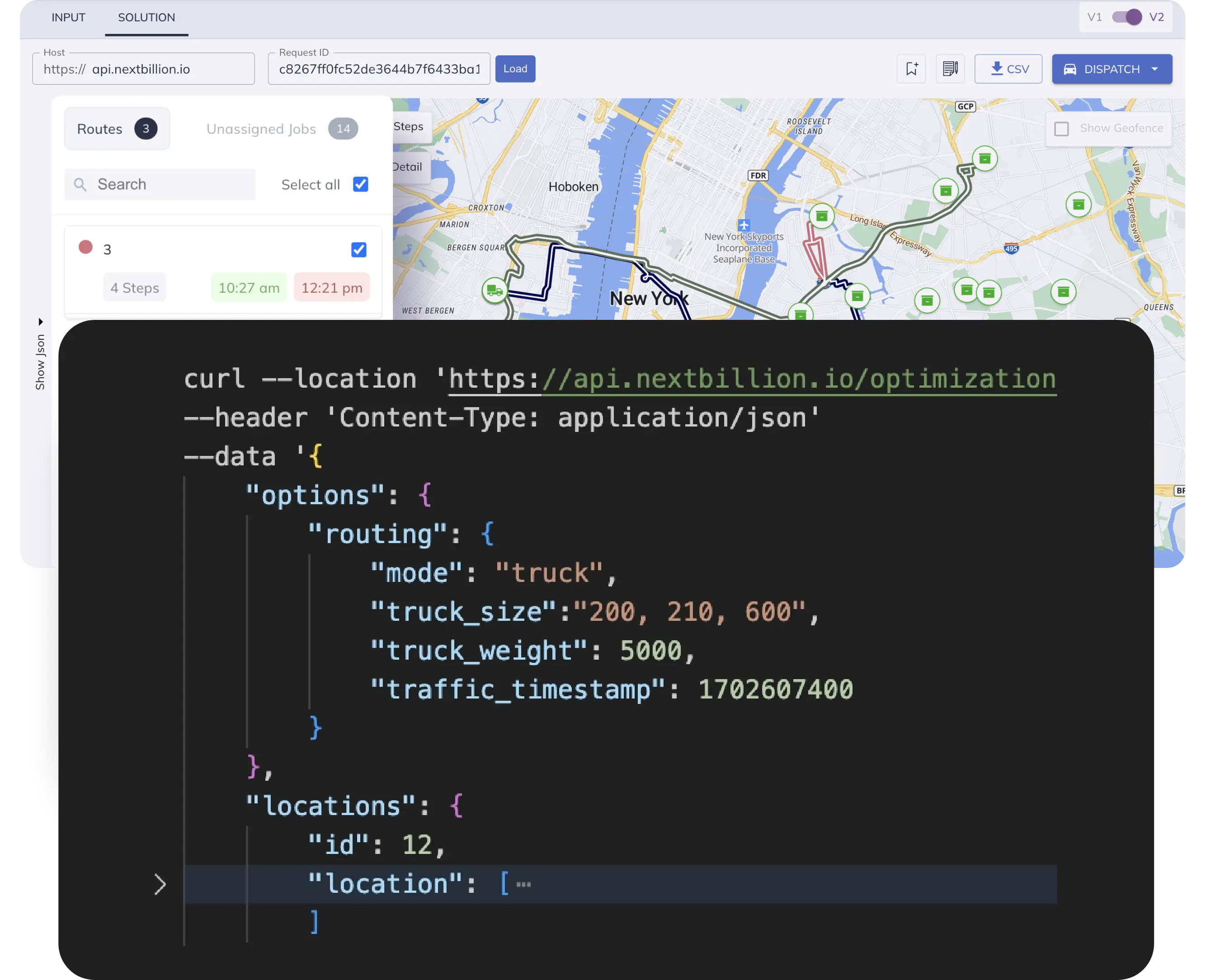Table of Contents
About The Company:
The client is a leading Canada-based Transportation Management System (TMS) provider whose software acts as an end-to-end solution for construction companies looking to digitize their operations.
The TMS software’s inbuilt features like dispatch, tracking, ticketing and timesheets help its customers transport their construction materials in an efficient and orderly manner. The company offers tracking of internal as well as external fleets on both web and mobile platforms.
The Challenge:
The client’s customer base has around 5,000 vehicles, and their systems log roughly 150,000 locations per month. The company’s primary objective was to increase the ETA accuracy of its dispatch and tracking system, providing a better experience for customers and drivers alike.
The following challenges acted as key bottlenecks:
1. Lack of in-app navigation
Drivers turned to third-party applications like Google Maps or Apple Maps for navigation. However, the TMS provider was unable to track driver movements when users switched away from their app. This inability to track drivers in real time made precisely locating drivers during dispatch almost impossible. This, in turn, was affecting ETA accuracy. Unreliable live visibility into driver routes often meant inaccurate ETAs and more route deviations, and it also posed a threat to driver compliance.
2. Lack of optimized routes for dispatch
The company’s route optimization problem was two-fold.
- Matching the right jobs to the right drivers with the necessary skills and equipment proved difficult. They wanted a routing solution that could seamlessly assign tasks and optimize routes by considering factors like vehicle capacity, driver skills and real-time data.
- Most routing solutions don’t offer custom routes based on the unique constraints and customizations required for trucking — height clearances and weight restrictions, for instance. This was problematic since trucks are a big part of the client’s fleet.
Our Solution:
Upon analyzing the requirements, NextBillion.ai’s engineers went about integrating a three-component solution that would effectively meet the TMS provider’s needs.
1. Navigation SDK for in-app guidance
NextBillion.ai’s Navigation SDK, built on Flutter, is accessible within both Android and iOS applications. Once integrated into the client’s app, drivers never needed to switch to another app for directions to their destinations. This enabled the company to provide turn-by-turn directions and reroute vehicles in real time in case of route deviations or faster routes becoming available.
2. Live Tracking API for precise asset tracking
NextBillion.ai also equipped the fleet operation with its Live Tracking API. This component allowed for the precise tracking and monitoring of driver movements to identify any route deviations and log the root cause of potential ETA delays.
3. Route Optimization API for enhanced operations
NextBillion.ai’s Route Optimization API helped the client factor their custom needs into the route generation process. They could specify truck capacities, equipment, time windows for pick-ups and deliveries, vehicle clearances, etc., and get optimized sequences that match the best available drivers for each job. Truck-based routing profiles empowered the TMS platform to optimize dispatch sequences with reliable, accurate ETAs.
The Outcome:
With NextBillion.ai’s flexible Navigation SDK, the TMS provider was able to implement turn-by-turn guidance for their drivers, ensuring compliance and safety. The Live Tracking API helped the company enforce recommended routes and figure out when and why route deviations occurred. Meanwhile, NextBillion.ai’s Route Optimization API allowed for the use of custom parameters and truck-specific routing profiles, solving the ETA accuracy challenge.
Ready to get started?
Request a DemoTable of Contents






